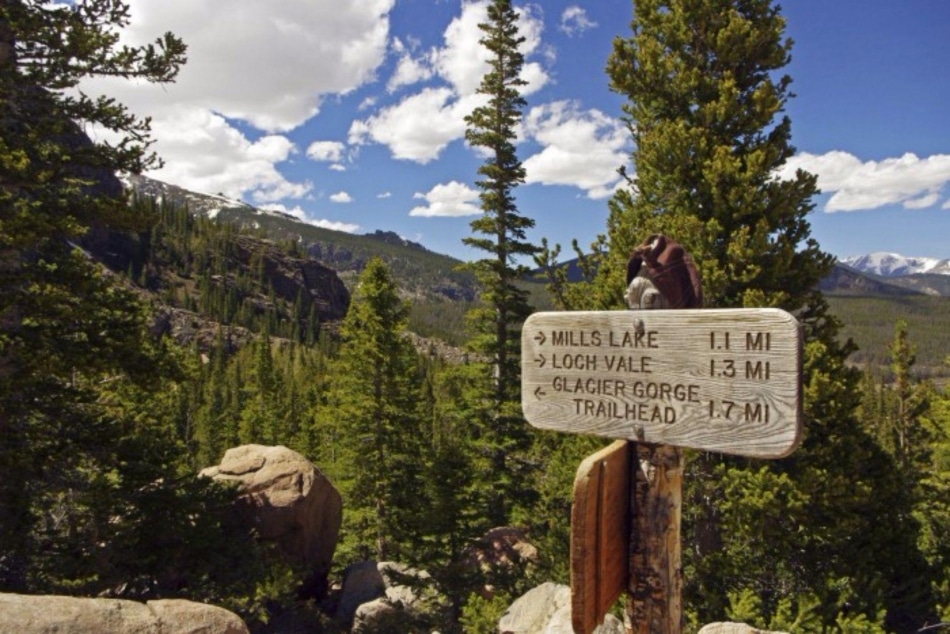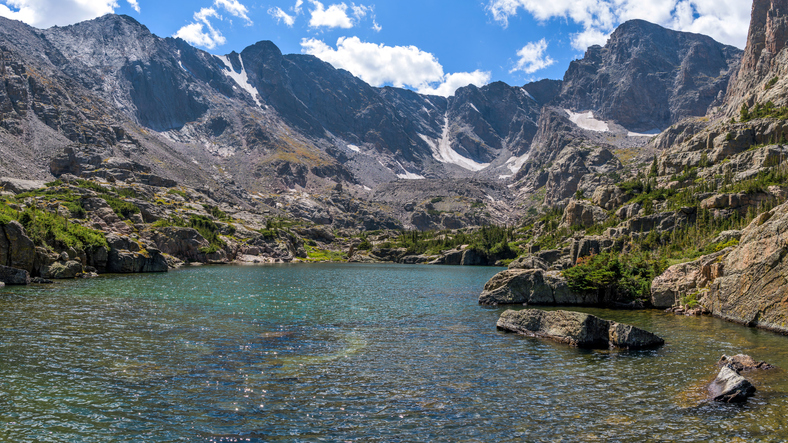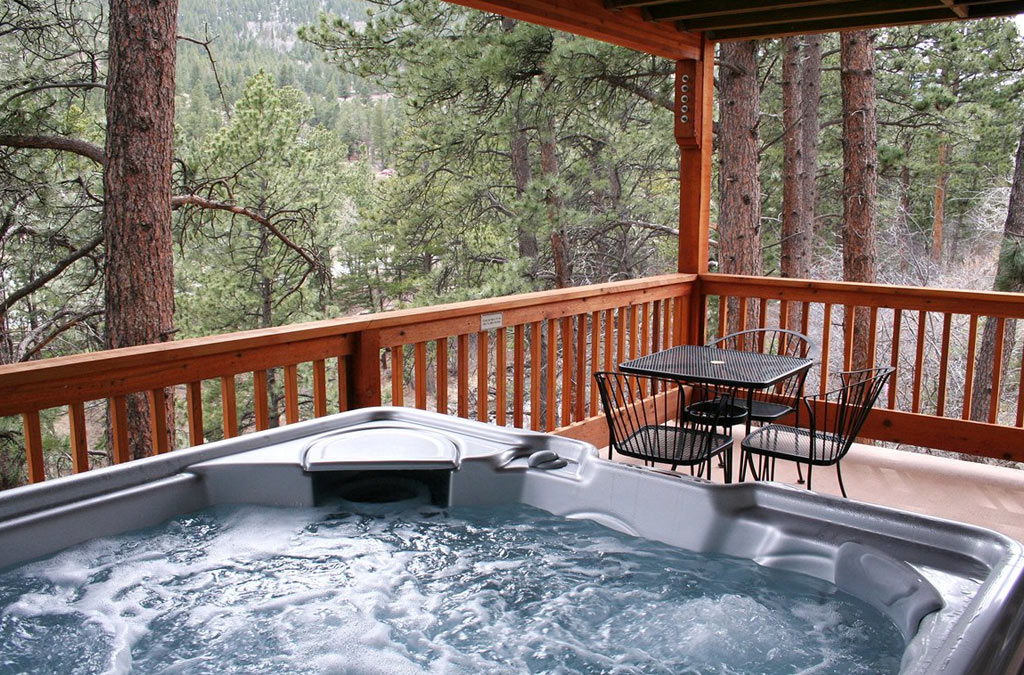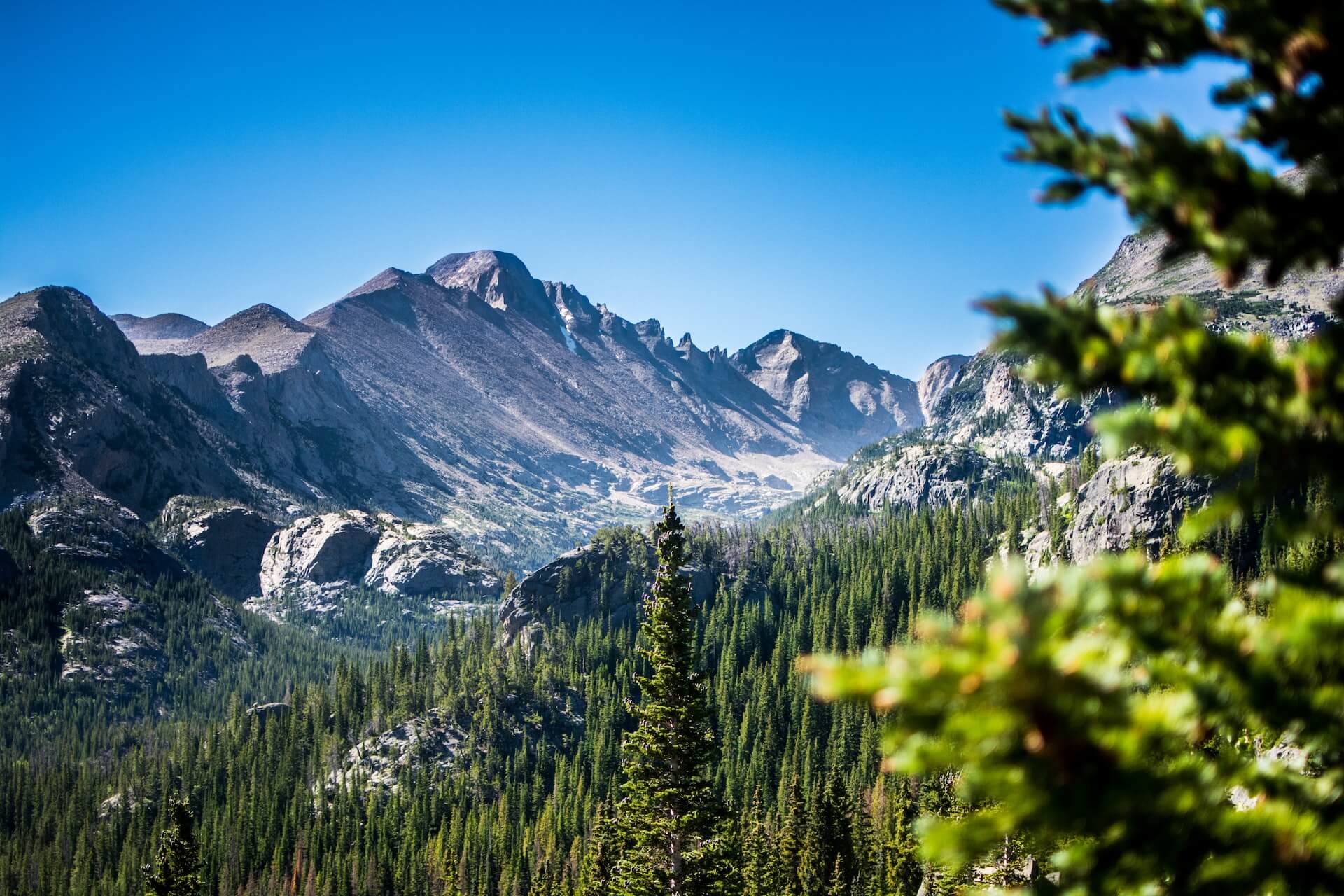As a follow-up to our moderate hikes to try this summer, we’re rounding out our list with our favorite difficult summer hikes in Rocky Mountain National Park.
Mt. Ida
First on the list is the 9.6-mile roundtrip to Mt. Ida! Located off the Poudre Lake Trailhead off of Trail Ridge Road and just on the “other” side of the Continental Divide, this trail offers some serious elevation gain at just over 2,100 feet in net gain, and about 75% of the hike is above the treeline. Hikers be warned, this trail requires an early start to avoid the common afternoon thunderstorms. This trail offers little shelter or areas to hide should a storm roll in so if you can roll out of bed at an early hour (we’re talking be on the road by 5 a.m.), this could be the hike for you! If you can get an early start, you’ll be greeted by views of the Never Summer Range and Gorge Lakes basin and may even see some bighorn sheep or elk trekking the tundra with you.

Hallett Peak
If its iconic landmarks you’re after on your hike, Hallett Peak at 10 miles roundtrip is the perfect strenuous hike. With 3,200 feet of net elevation gain, you’ll be able to summit two mountains by crossing Flattop and then reaching Hallett. If you’re up for it, you can add Otis for a third summit. Hallett Peak is off of the Bear Lake Trailhead and again, we recommend getting an early start though this time it’s also to help secure a parking spot at the Bear Lake lot! At Emerald Lake Overlook, you can enjoy the view of the gorge thanks to Tyndall Glacier, one of five active glaciers in Rocky Mountain National Park. Stay away from ledges and cliffs as the terrain may not be as firm or steady as it appears.

Black Lake
In our easy hikes post, we mentioned Mills Lake from the Glacier Gorge Trailhead, and Black Lake is a great trail to add on to your day of hiking for a bit more of a challenge with a beautiful view of the backside of Longs Peak and Keyboard of the Winds. Black Lake is 9.6 miles roundtrip and you’ll see Mills Lake, Jewel Lake, and Ribbon Falls during your hike. If you want more water views, you can turn left at the lake and take the trail next to the waterfalls up to Green, Blue, and Frozen Lakes.

Lion Lake
The longest trail on our list at 13.7 miles, Lion Lake is best saved for late-season visitors, visiting July – September, to ensure the snow has melted. You’ll start at the Wild Basin Trailhead and you won’t be disappointed by the alpine views that greet you after this endurance hike. In one section, you’ll gain 565 feet in .85 miles but prior to this elevation gain, you’ll have a level stretch to catch your breath.

As we’ve mentioned in our other posts in this series, please prepare for any hikes by taking plenty of water, snacks, extra layers, and stay on the trail by looking for cairns. Not only is this important for your safety but to help protect the delicate ecosystems in the park. To keep yourself and others safe, it’s best to hike at your ability level and work your way up. We have plenty of cabins for you to enjoy over multiple hiking trips!






